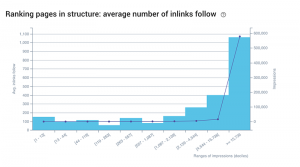A quick coffee and pastry from Starbucks for breakfast. Microwaved leftovers at your desk for lunch. Fast food on the way home for dinner. For many Americans, sitting down to eat a freshly cooked meal with friends or family seems like a lost luxury.
We all know the importance of gathering around the family dinner table. According to The Atlantic, “the dinner table can act as a unifier, a place of community. Sharing a meal is an excuse to catch up and talk, one of the few times where people are happy to put aside their work and take time out of the day.”
Unfortunately, eating with others at work doesn’t hold the same kind of significance for many people. Research has shown that only 1 in 5 people step away from their desks for a meal during the workday. And while it may seem harmless to grab a quick bite at your desk through the lunch hour, creativity suffers, productivity lags, and the sense of belonging among coworkers can slowly erode if it becomes a habit.
Why Eating With Others Matters
 When considering the need for collaboration, creativity and teamwork in today’s work environment, eating alone at your desk doesn’t make sense. If the goal is to share ideas and increase productivity, why are we actively engaging in activities that do just the opposite? If the dinner table can act as a gathering place at home, why wouldn’t we work to equip our offices with the same kind of unifying space?
When considering the need for collaboration, creativity and teamwork in today’s work environment, eating alone at your desk doesn’t make sense. If the goal is to share ideas and increase productivity, why are we actively engaging in activities that do just the opposite? If the dinner table can act as a gathering place at home, why wouldn’t we work to equip our offices with the same kind of unifying space?
Companies like Google and Pixar have used the idea of “casual collisions” to design their workspaces in a way that promotes spontaneous, random discussions among employees. In fact, Google intentionally designed their New York City campus so that no part of the office was more than 150 feet from food. Whether in a restaurant, kitchen or cafeteria, team members are encouraged to collaborate and share ideas in common gathering places.
A recent study by Cornell’s Kevin M. Kniffin, Brian Wansink, Carol M Devine and Jeffery Sobal found a direct link between sharing meals together and higher performing teams. Their study of a fire department in a large city in the U.S. included visits to 13 different firehouses and 15 months of qualitative and quantitative research.
A typical firehouse has a kitchen, but it’s the responsibility of the firefighters to stock the kitchen and cook meals. Without any official mention of roles and responsibilities, these firefighters have adopted meal planning, cooking, eating together and cleaning up into their firehouse culture.
Firefighters reported that eating together makes them feel like a family; strengthening the bond between coworkers in a way that was lacking from other activities throughout the day. Further research found an undeniable positive correlation between eating together and higher team performance. The skills that underlie simple meal planning—cooperation, communication and collaboration—show up through performance on the job.
How Can You Apply These Findings?
Research has shown that eating meals together can lead to higher performing teams. So how do you begin to apply these findings to your office?
Encourage Employees to Eat Meals Together. There are several ways to encourage employees to eat meals together. Hosting an offsite team lunch, or ordering in for a meal around the conference table are both easy options. Or, it may be as simple as scheduling team lunches on the calendar, setting the expectation so employees can plan ahead.
Additionally, consider how you’re spending your own lunches. As a leader, are you role-modeling the behaviors you’re trying to promote? Or are you staying at your desk through meals, too?
Give Them a Reason to Step Away From Their Desks. What are you doing, as a leader, to encourage your employees to step away from their desks for a meal? Many companies – particularly startups – tend to offer perks like catered lunches. But in practice, these might actually discourage employees from venturing outside during their lunch hour.
Be mindful of how the culture of your company may be unintentionally keeping employees glued to their seats.
Take Team-Building to the Kitchen. Forget the trust falls; schedule a team building activity that involves cooking together. Whether offsite at a culinary school, or a chef-hosted event in your office, getting people together to plan, prepare, and enjoy a meal together can help your employees learn to better perform as a team.
Many leaders today are searching for that silver-bullet solution that will solve their company performance problems, but maybe the answers are much simpler. Though it’s often overlooked, cooking and eating together as a team can help foster engagement, innovation, creativity, and ultimately help your entire team perform better on the job.
Business & Finance Articles on Business 2 Community(28)









